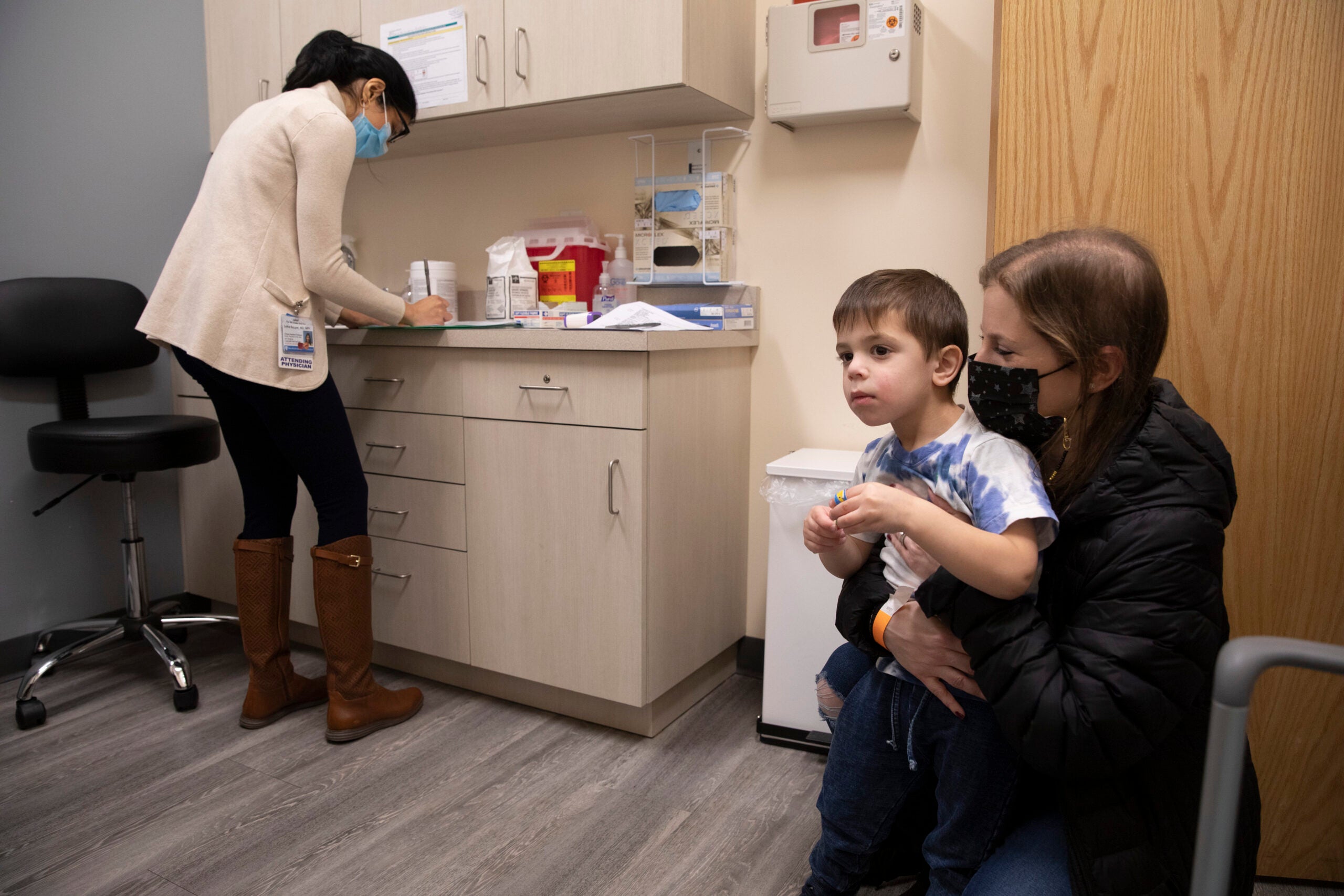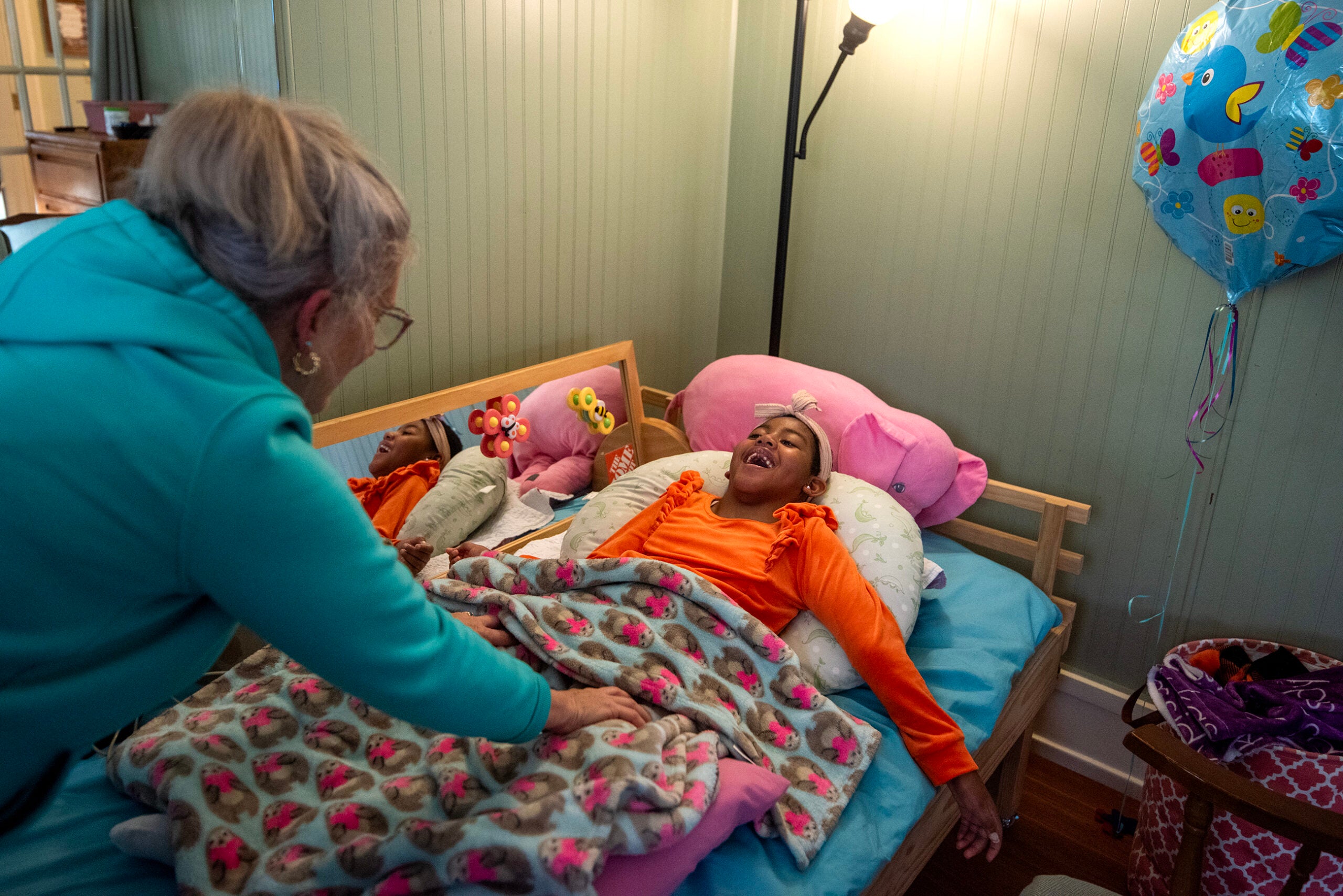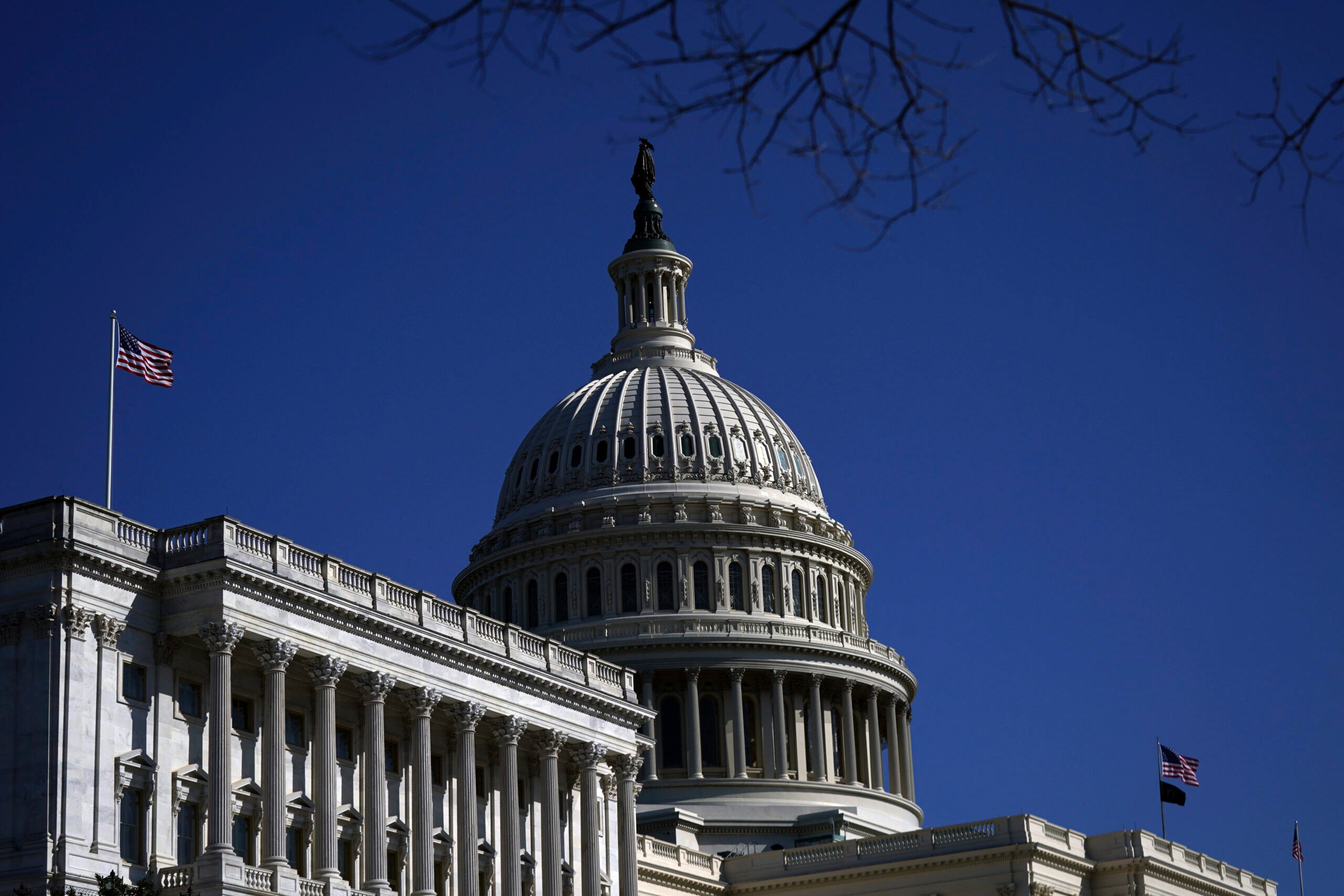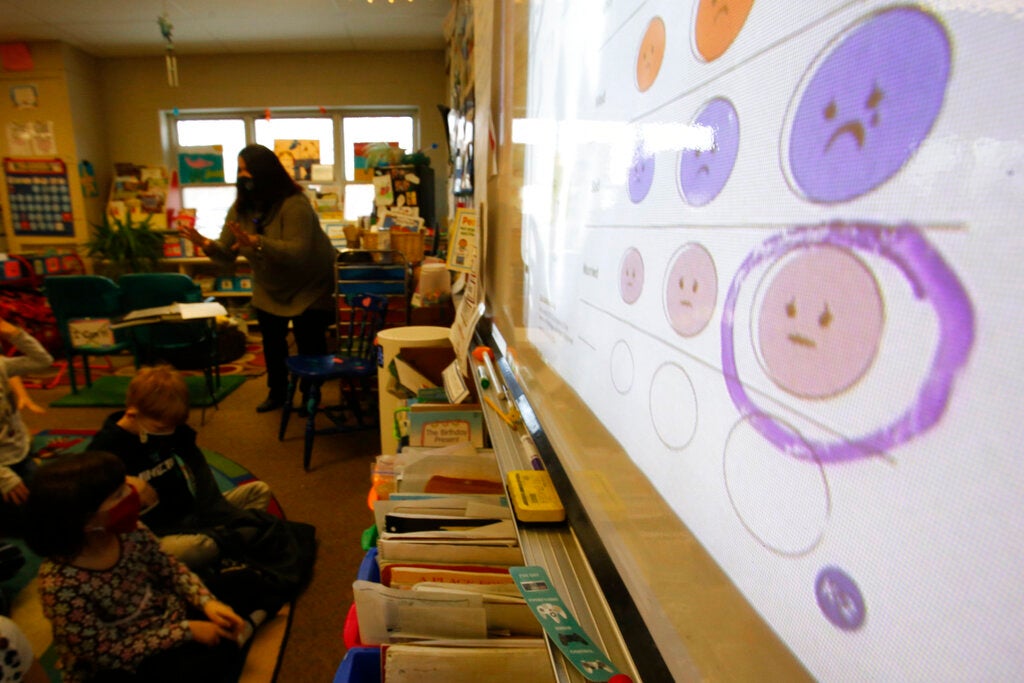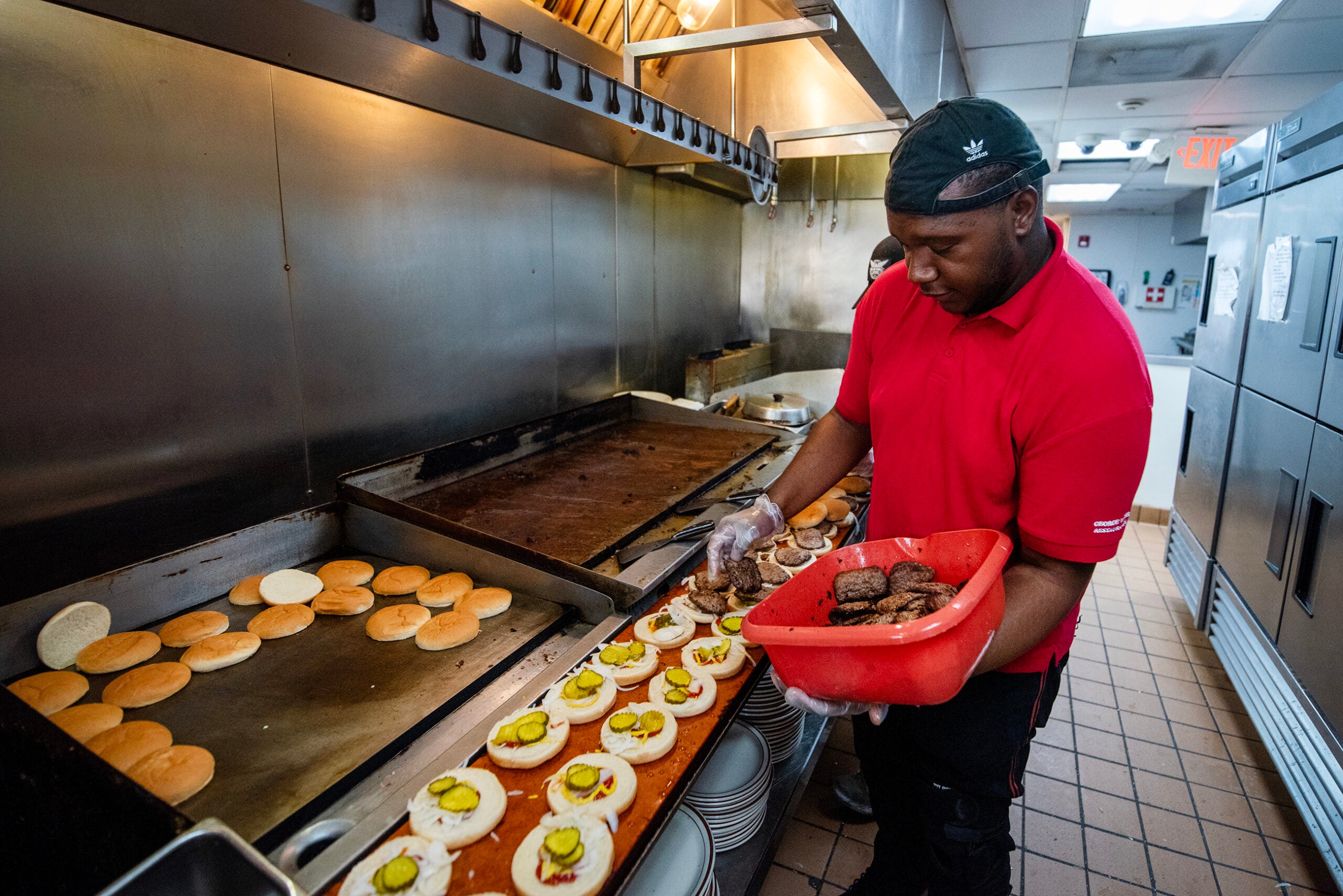Kristin Murphey’s 2-year-old daughter Emma has been home sick just about every other week since September.
There have been colds, a full body rash, RSV with pneumonia and pneumonia without RSV. They’ve taken multiple trips to the pediatrician, and had one stint in the emergency department.
All the while, Murphey and her husband, who live in Madison, have tried to keep working, sneaking tasks in during naptime and at odd hours. But as Murphey says, “working remotely with a 2-year-old is not actually a thing.”
News with a little more humanity
WPR’s “Wisconsin Today” newsletter keeps you connected to the state you love without feeling overwhelmed. No paywall. No agenda. No corporate filter.
For the days when multitasking isn’t an option, they’ve relied on sick time. Their experience is one caregivers across the nation are dealing with right now. Recent data from the U.S. Bureau of Labor Statistics shows workplace absences for child care reasons rose to an all-time high in October.
The reasons are twofold. This year’s respiratory illness season came early and strong with RSV and influenza sending waves of kids home from day care and school. Cases of Respiratory Syncytial Virus in particular have skyrocketed. According to data from the Centers for Disease Control and Prevention, RSV cases have already reached peak levels from 2021. And the number of cases tripled in the last two months, Axios reports.
In Wisconsin, the state Department of Health Service counted 2,273 cases of RSV from Oct. 30 to Nov. 5 alone.
It’s also a time when child care facilities are facing widespread worker shortages, leaving parents scrambling to find care. And the continued circulation of COVID-19 has put additional pressure on schools and day cares.
But caregivers don’t have a choice. When a kid is sick, or a day care shuts down due to illnesses, they have to stay home.
“It feels like I’m waiting for that call from day care to say, ‘Ope, she has a fever, come pick her up,’” Murphey said.
“We’re just so exhausted,” she continued. “We feel like we’re always waiting for the next thing.”
Pandemic pushes employers to think about sick time differently
Another factor is that sick time and paid leave became a political rallying cry during the onset of the COVID-19 pandemic. Employers encouraged workers to stay home when sick, and workplaces made their policies more flexible so people could take care of their families.
A 2021 national survey from the Kaiser Family Foundation found that nearly four in 10 workers are employed somewhere that started offering or expanded paid leave benefits during the pandemic. Ongoing workforce shortages have also pushed employers to make changes to attract and retain workers.
Missy Hughes, CEO of the Wisconsin Economic Development Corp., said she’s seen something similar among employers in Wisconsin.
“Employers are recognizing that retention of their employees is critical when we’re in a time of workforce shortage,” Hughes said. “And so being more accommodating to absences that are associated with child care is indicative of the need to retain those employees and keep them for the long term.”
But Laura Dresser, associate director of COWS, a University of Wisconsin-Madison think-tank, said there’s also been a fundamental change in how employers and employees navigate illness.
“There is this thing that’s changed about what we do when we’re sick, when our kids are sick, what our child cares will accept or tolerate when our kids are sick,” Dresser said. “I think people send their kids or themselves to school or work sick less often than we used to.”
She expects people having more access to sick time hasn’t had a major impact in their decision to take time off.
“The fact that more workers get paid now when they’re sick than used to makes it slightly more likely that they’ll stay home,” Dresser said. “But even in the olden days, they stayed home when their kid was sick, they just didn’t get paid.”
Across the board, people in higher paying jobs are more likely to have access to paid time off, while low-wage workers and people of color have considerably fewer workplace benefits.
Dresser said the change in people’s mindsets and the intense spike in RSV, along with child care woes, is likely the cause of the massive spike in the U.S. Bureau of Labor Statistics data.
“The RSV is really enormous,” she said. “I don’t have a little kid, so I’m not close to the experience of this, but every time I talk to someone who’s got little kids around them, it’s a little shocking.”
For Murphey, the ongoing slog of illnesses has made her family rethink some of the social gatherings they’ve fallen back into. They’re even weighing whether it’s worth spending the holidays with extended family.
“It’s making us reconsider what we do with other people. And that’s really sad, because we don’t want to have to do that again,” Murphey said. “But we have to work, and we have to provide for our family. And we have to keep our kiddo safe.”
Wisconsin Public Radio, © Copyright 2026, Board of Regents of the University of Wisconsin System and Wisconsin Educational Communications Board.
